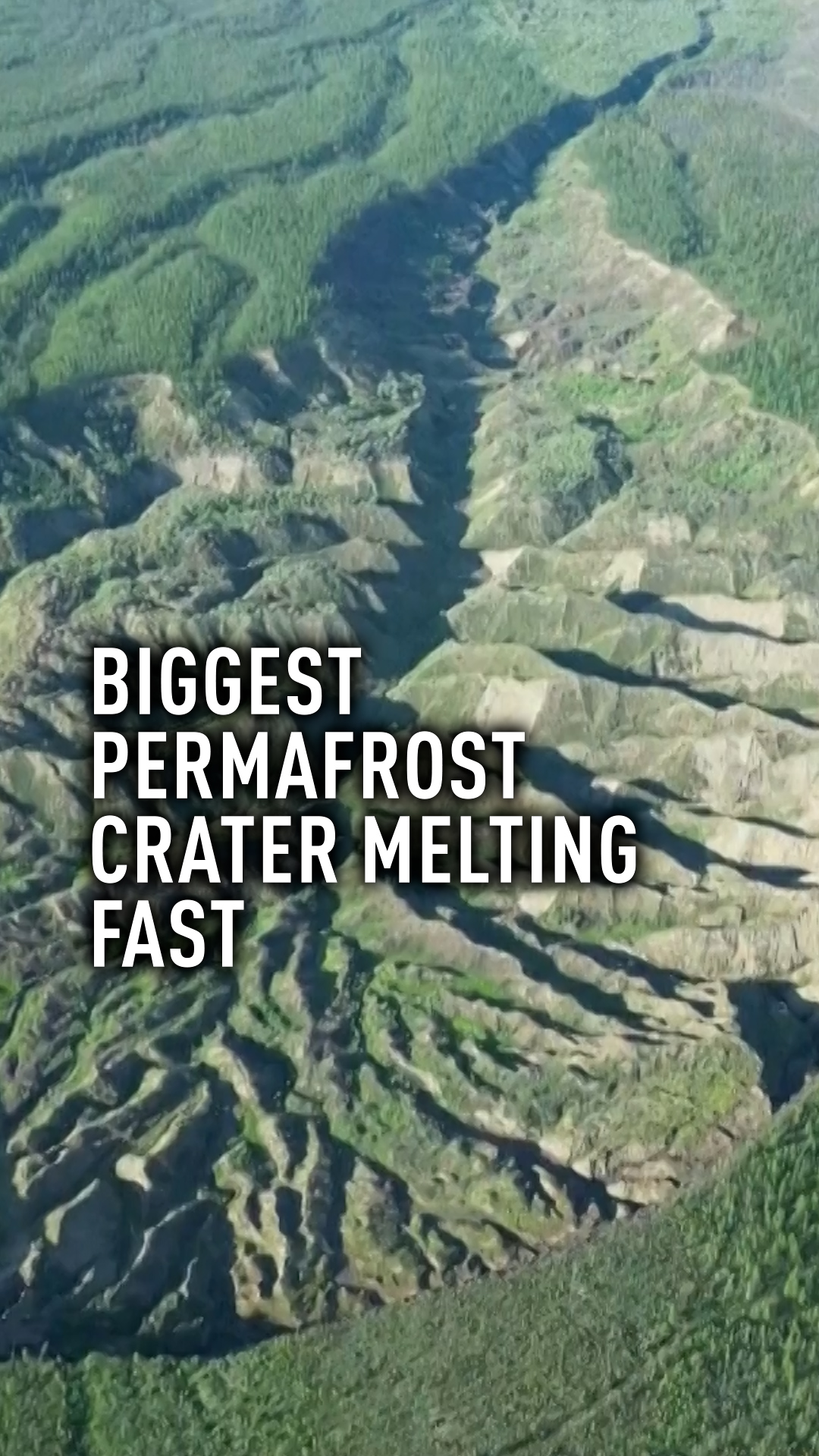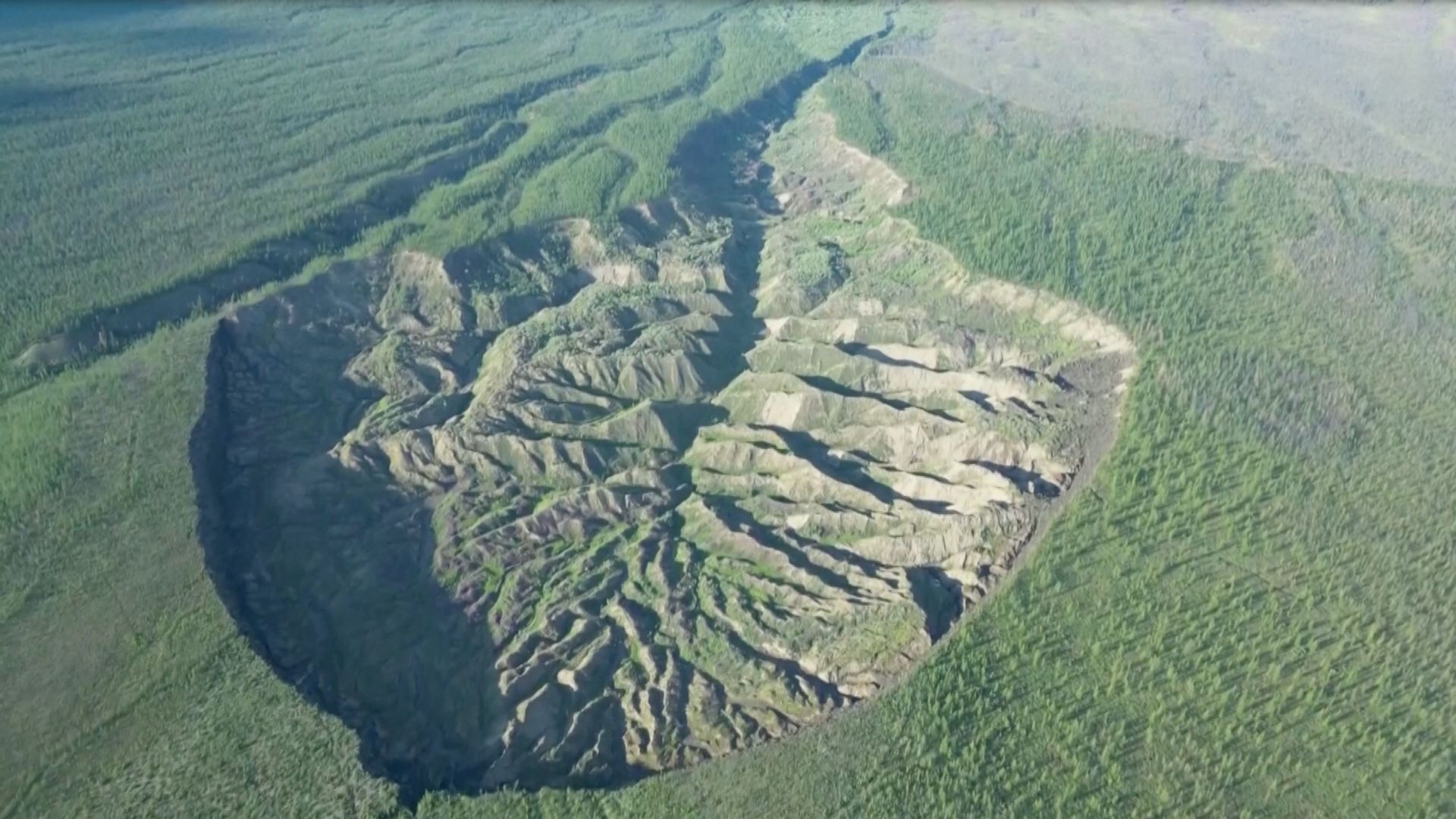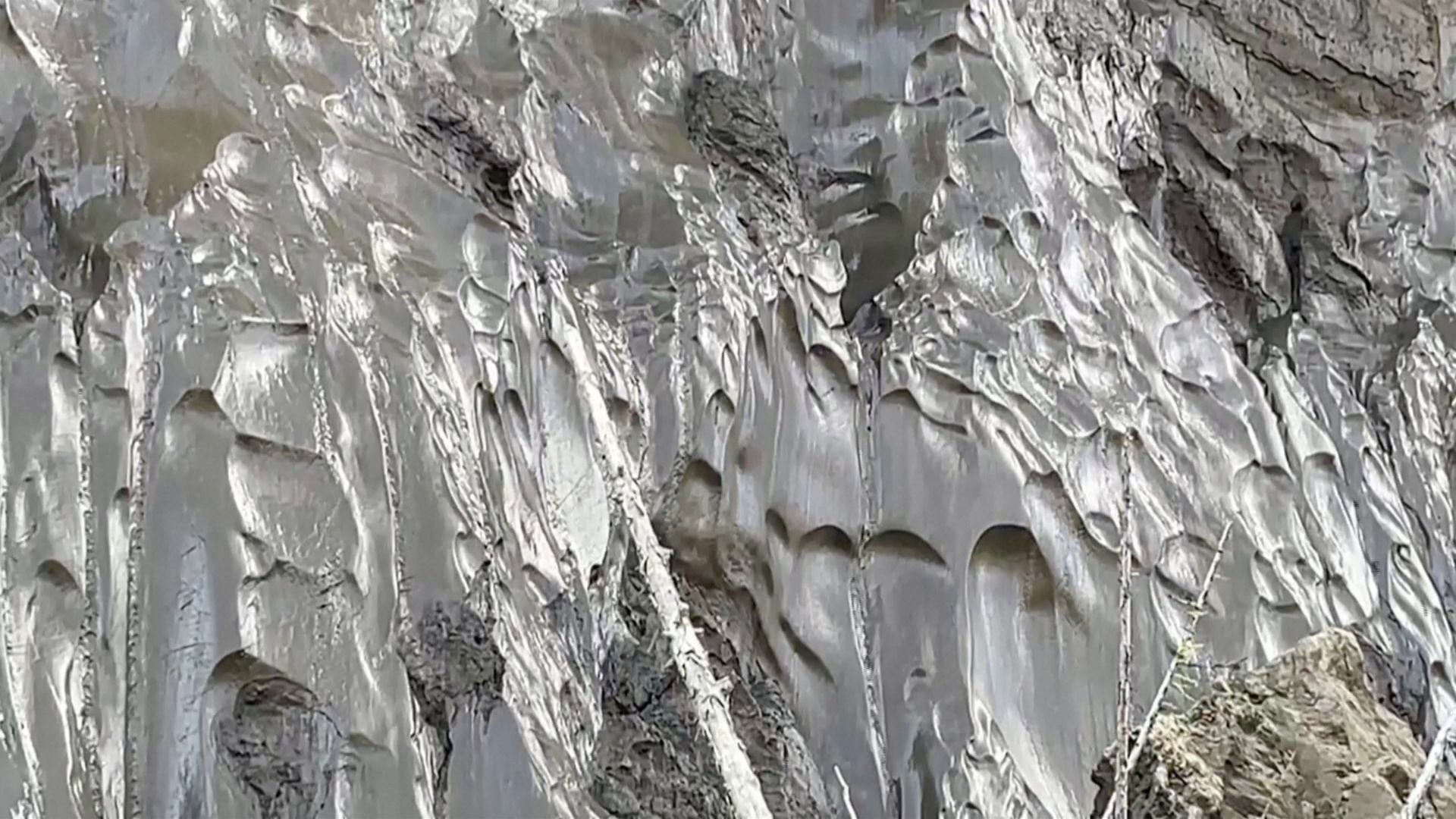00:58

Drone footage has revealed details of the Batagaika crater, a one kilometer long gash in Russia's Far East that forms the world's biggest permafrost crater.
In the video two explorers clamber across uneven terrain at the base of the depression, marked by irregular surfaces and small hummocks, which began to form after the surrounding forest was cleared in the 1960s and the permafrost underground began to melt, causing the land to sink.
"We locals call it 'the cave-in,'" local resident and crater explorer Erel Struchkov said as he stood on the crater's rim. "It developed in the 1970s, first as a ravine. Then by thawing in the heat of sunny days, it started to expand."
READ MORE
Tourists forced to flee Rhodes wildfires
The rise of Temu, China's new retail app
Spanish trans youths fear roll-back of rights
Scientists say Russia is warming at least 2.5 times faster than the rest of the world, melting the long-frozen tundra that covers about 65 percent of the country's landmass and releasing greenhouse gases stored in the thawed soil.

The Batagaika crater is labeled 'gateway to the underworld' by locals. /Reuters
The Batagaika crater is labeled 'gateway to the underworld' by locals. /Reuters
The "gateway to the underworld," as some locals in Russia's Sakha Republic also call it, has a scientific name: a mega-slump.
While it may attract tourists, the slump's expansion is "a sign of danger," said Nikita Tananayev, lead researcher at the Melnikov Permafrost Institute in Yakutsk.
"In future, with increasing temperatures and with higher anthropogenic pressure, we will see more and more of those mega-slumps forming, until all the permafrost is gone," said Tananayev.

The permafrost crater is melting faster than anywhere else on earth. /Reuters
The permafrost crater is melting faster than anywhere else on earth. /Reuters
Thawing permafrost has already threatened cities and towns across northern and northeastern Russia, buckling roadways, splitting apart houses, and disrupting pipelines. Vast wildfires, which have become more intense in recent seasons, exacerbate the problem.
Locals in Sakha have taken note of the crater's rapid growth.
Scientists aren't sure of the exact rate at which the Batagaika crater is expanding. But Tananayev says the soil beneath the slump, which is about 100 meters deep in some areas, contains an "enormous quantity" of organic carbon that will release into the atmosphere as the permafrost thaws, further fueling the planet's warming.
"With an increasing air temperature we can expect (the crater) will be expanding at a higher rate," he said. "This will lead to more and more climate warming in the following years."
Subscribe to Storyboard: A weekly newsletter bringing you the best of CGTN every Friday
Source(s): Reuters